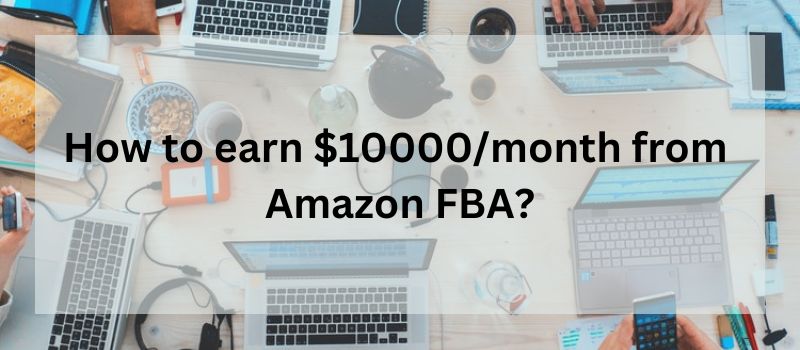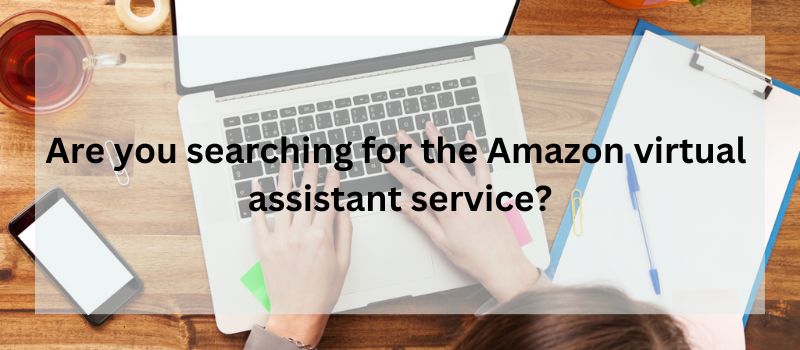If you’re looking to build a business that can bring in serious passive income, selling products through Amazon’s Fulfillment by Amazon (FBA) program is one of the best and most accessible options out there.
Thousands of entrepreneurs and amazon fba experts around the world have built full-time incomes by selling products that ship directly from Amazon warehouses to customers when purchased on the Amazon marketplace.
Contents
- 1 How to earn $10000/month from Amazon FBA?
- 2 Learning the Fundamentals of Amazon FBA
- 3 Choosing Profitable Products to Sell on Amazon
- 4 Optimizing Your Amazon FBA Business
- 5 Scaling Your FBA Business to $10,000 in Monthly Revenue
- 6 How Amazon FBA Works
- 7 FAQs:
- 8 Q1: How much money can I make selling on Amazon FBA?
- 9 Conclusion:
How to earn $10000/month from Amazon FBA?
Amazon fba experts identify high-demand products not oversaturated with competitors using tools to analyze Amazon listings. Vet and source items from reliable suppliers at reasonable wholesale rates to drive sufficient margins.
Optimize titles, images and descriptions for conversion lift. Expand offerings across other Amazon marketplaces to increase customer reach. Consider outsourcing fulfillment and order processing to scale efficiently.
With the demand for variety and convenience on Amazon only continuing to grow each year, tapping into FBA is hugely promising if amazon fba expert approach it strategically. So how can amazon fba experts specifically position yourself to How to earn $10000/month from Amazon FBA?
Let’s break it down step-by-step.
Learning the Fundamentals of Amazon FBA
Before diving headfirst into selling, it’s important to understand the core concepts of how selling through FBA works to leverage it effectively.
What is Fulfillment by Amazon (FBA) and How Can it Help You Earn Money?
The Fulfillment by Amazon program enables third-party sellers to ship their inventory directly to Amazon warehouses when listing them for sale on the Amazon marketplace.
This means that when a customer places an order for your products, Amazon handles picking, packing and shipping your items rather than you having to do this yourself.
This proves incredibly convenient by saving you time, effort and overhead costs on fulfillment duties.
Amazon has expansive global fulfillment infrastructure and efficiencies of scale, so they can ship items faster and cheaper than individual sellers normally can. This gives customers an incentive to buy from FBA sellers to get quick, free Prime delivery.
By offloading fulfillment to Amazon under this model. You get to focus squarely on the essential duties that drive actual growth like: sourcing viable products, optimizing listings for conversions, and pursuing new sales channels.
This is the passive income appeal of FBA – Amazon handles the logistical heavy lifting while you scale the revenue.

Critical Tips for Getting Started Selling on Amazon FBA
When initially diving into Amazon FBA sales, here are some key steps to take:
- Register as an official third-party Amazon seller so that you can operate legally under their terms of service.
- Familiarize yourself with Amazon seller fees like monthly subscriptions, referral fees on sales, and FBA pick & pack charges so you can budget accordingly.
- Set up your customizable Amazon Seller Central account which will function as the hub for monitoring your inventory levels, managing promotions, tracking sales analytics, communicating with buyers, handling orders and payouts, and more. This platform is absolutely vital for running your backend operations.
As long as you thoroughly understand FBA as a concept and follow Amazon’s guidelines in good faith, amazon fba expert will be ready to start actually building your business.
Choosing Profitable Products to Sell on Amazon
In order to realistically reach $10,000 in monthly revenue, you have to be extremely selective and strategic with the products you choose to invest in and sell. Extensive research is required to reliably validate demand and profit margins.
Finding Trending and In-Demand Products
Rather than reinventing the wheel, a smart way to identify promising products for FBA is to see what is already actively selling using analytics tools like Jungle Scout. You can search and filter Amazon listings to find specific product categories that seem to be frequently bestselling.
Pay close attention to seasonality as well when assessing demand, as certain products may only trend during certain annual peaks like summertime or the holidays. amazon fba expert want to ensure any prospective product has shown consistent and long-term demand, not just temporary spikes.
Sourcing Reliable Suppliers and Manufacturers
Once you’ve identified appealing products to sell based on Amazon demand data, the next step is tracking down reliable suppliers and/or manufacturers that can actually provide these items at reasonable wholesale rates.
A go-to resource here is Alibaba to find overseas exporters, usually from China, that produce commodities in your niche at scale. Thoroughly communicate with any prospective suppliers about pricing tiers based on order quantities.
Where they source and produce items, quality control protocols, and production capacity guarantees.
You need to confirm wholesale profit margins would make financial sense after accounting for supplier quotes and mandatory Amazon seller fees. Testing sample orders is also highly recommended before fully committing on large inventory buys.

Optimizing Your Amazon FBA Business
As amazon fba expert start initial product listings start racking up sales and reviews, you can’t just rest on your laurels if you actually intend to scale towards nearly $10K in sustainable passive monthly earnings.
Ongoing optimization is required to compound growth.
Managing Inventory and Forecasting Demand
One element of leveraging FBA effectively is closely monitoring your inventory levels in Amazon’s fulfilment centers and intelligently adjusting stock based on evolving demand.
This ensures you avoid losing sales from going out-of-stock while also preventing tying up too much capital in excess inventory that lags. Especially when first launching a new product, forecasting desired inventory requires some trial and error.
But Amazon Seller Central provides the analytics and reporting to inform your planning based on initial or seasonal sales patterns you detect.
Strategies for Standing Out in a Competitive Market
Just because a particular product displays lucrative sales potential doesn’t mean other sellers haven’t caught onto this and jumped aboard too. Facing competition is inevitable. Executing the following focus areas can help give your listings an edge:
- Optimizing Titles, Features & Descriptions: Ensure your listings actually convert browsers into buyers with compelling sales copy and complete details addressing common questions.
- PPC & Keyword Targeting: Run low-cost Product Promotion ads through Amazon to more frequently appear for priority keyword searches, helping you drive more impressions and sales.
- Customer Satisfaction: Obsess over providing 5-star customer experiences via quality products, responsive communication, and fast shipping so you maintain a high rating.
Scaling Your FBA Business to $10,000 in Monthly Revenue
If done right to this point following the best practices covered, you should be solidly profitable in your initial product selection(s). Now comes the fun part – channeling these early wins into building a true passive income empire at scale.
Expanding to Other Amazon Marketplaces
One basic but highly effective growth tactic is to expand your listings beyond just Amazon’s US marketplace to other regional ones like:
- Amazon UK
- Amazon Canada
- Amazon EU
The process involves some reformatting around currencies, shipping rates, tax policies etc. but you gain access to entire additional populations of buyers.
Building a Diversified Portfolio of Products
Rather than limiting yourself to just one niche product category, progressively introducing complementary items over time mitigates risk and opens up revenue from more buyer segments.
Consider private labeling your own brands as well for greater flexibility.
Automating Processes to Increase Efficiency
As you start juggling an expanding catalog of product listings across Amazon marketplaces, manual order processing and inventory updates will prove frustratingly time-intensive.
Seek assistance through contracting key tasks to virtual assistants or specialized FBA services. For $10K monthly at stake, outsourcing speed bumps is well worth it.

How Amazon FBA Works
Step 1: Create an Amazon Seller Central Account
The first step to selling on Amazon FBA is to create an Amazon Seller Central account. This is the portal you will use to manage your products, inventory, orders, and more.
When setting up your account, you will need to provide information about your business, tax information, and banking details.
Step 2: Send Inventory to Amazon Warehouses
Once registered as a seller, you will prepare shipments containing your products to send to Amazon’s fulfillment centers. Amazon fba expert label products with FNSKUs (Amazon’s item identification code) so they can track inventory.
Amazon has over 175 warehouses globally, so they will direct you to send inventory to optimal locations.
Step 3: List Your Products For Sale
In Seller Central, create listings for the products you shipped to FBA. Include all relevant product details, images, pricing and other metadata that will display on the marketplace. Optimizing listings to drive conversions is crucial.
Step 4: Amazon Fulfills & Ships Orders
As customers purchase your items on Amazon.com, Amazon’s staff will pick, pack and ship orders from their fulfillment centers. Customers can select quick shipping options at checkout including Prime free 2-day shipping.
Step 5: Get Paid
Amazon will collect payment from customers when they place orders and handle any returns or refunds. As the seller, you will receive payouts every two weeks for items sold minus Amazon’s referral and fulfillment fees.
The convenience of outsourcing packaging and shipping to Amazon handles the laborious aspects ecommerce fulfillment. This allows you to focus on profitably scaling your product catalog.
FAQs:
Q1: How much money can I make selling on Amazon FBA?
You can realistically expect to make $2,500 to $5,000 per month initially through FBA. With rigorous optimization of listings, expanding products, and managing outsourcing, you can scale up to over $10,000 per month long-term.
Q2: What percentage does Amazon take from FBA sellers?
Amazon charges FBA sellers a referral fee between 8-15% per item sold depending on the product category. There are also monthly subscription costs and fulfillment per unit fees.
Q3: Is it hard to make money on Amazon FBA?
Making consistent money through FBA involves significant initial research and planning to validate profitable products not oversaturated with competition. But with the right strategy, FBA can make for rewarding and scalable passive income.
Q4: Can I use FBA without selling on Amazon?
No, the Fulfillment by Amazon program is exclusively tied to selling items directly on their Amazon marketplace in order to leverage their shipping infrastructure.
Q5: How much does it cost to start Amazon FBA?
You can open an Amazon selling account for just $40 per month plus variable referral fees. In terms of inventory, expect between $500 to $5,000+ to source your first batch of products to sell through FBA.
Q6: Can Amazon FBA be automated?
While aspects like inventory and order management will need regular oversight, you can optimize efficiency by delegating key tasks to contracted virtual assistants and services customized for FBA.
Conclusion:
Generating a legitimate $10,000 per month through Amazon FBA is certainly achievable but requires diligent research, strategic planning, and robust optimization over time.
By thoroughly understanding how to identify profitable products tied to buyer demand and deftly navigating Amazon’s tools and policies, you too can build a lucrative FBA business.
Consider leveraging a virtual assistant specializing in supporting Amazon sellers so that you don’t get overwhelmed.
Get immediate access to our ‘Rapid Expansion Blueprint’ by entering your email below for time-tested tactics on:
- Diversifying into new product lines
- Automating order processing
- Securing supplier contracts
- Expanding across Europe and Asia
Just share your best email, and I’ll send the blueprint over ASAP.”
Read More:




This is my first time pay a quick visit at here and i am really happy to read everthing at one place